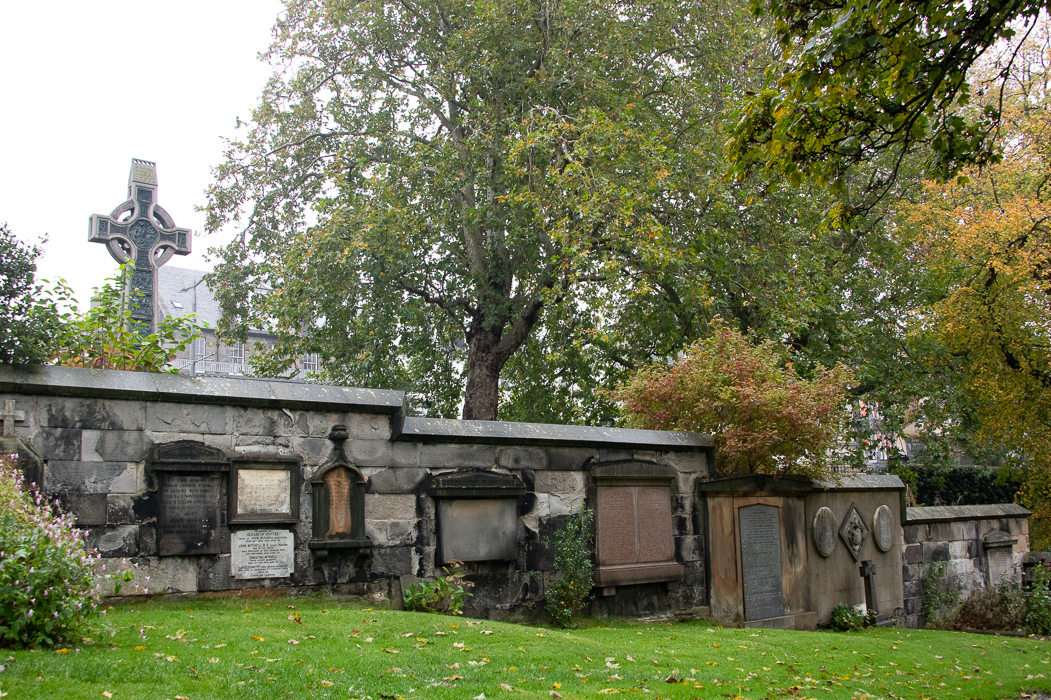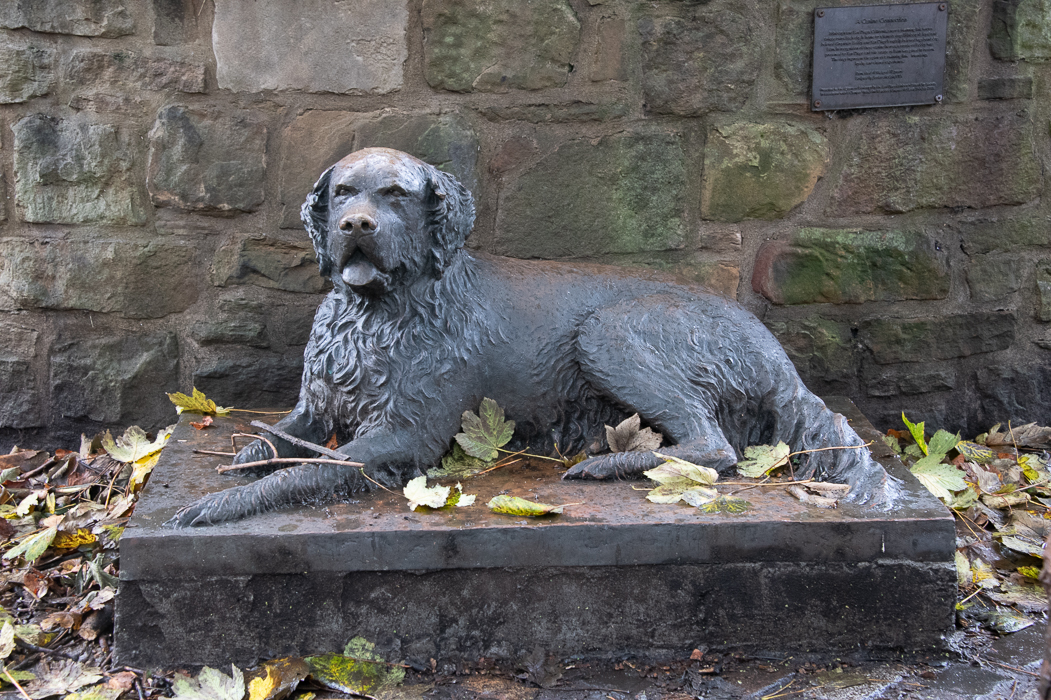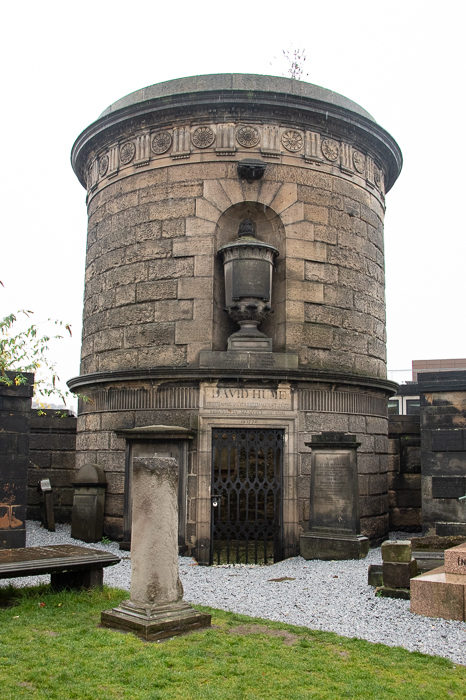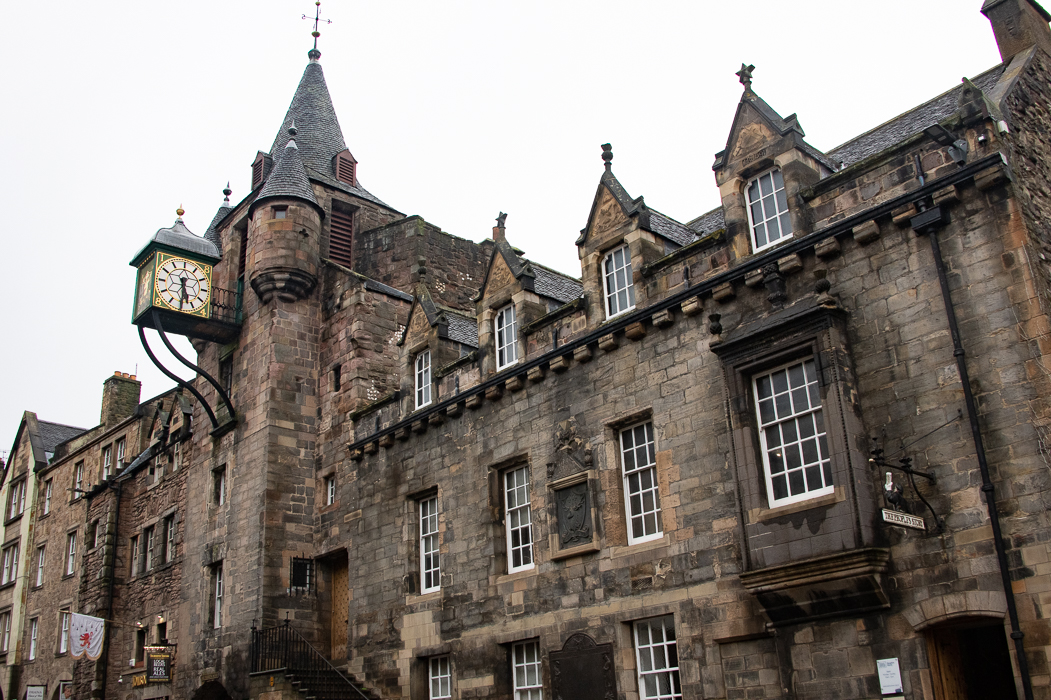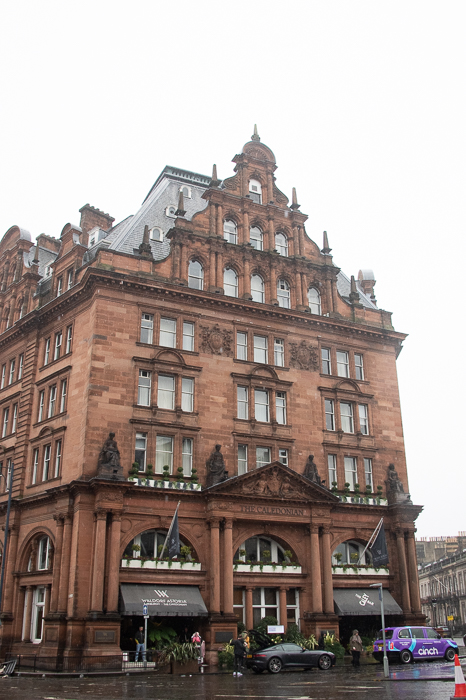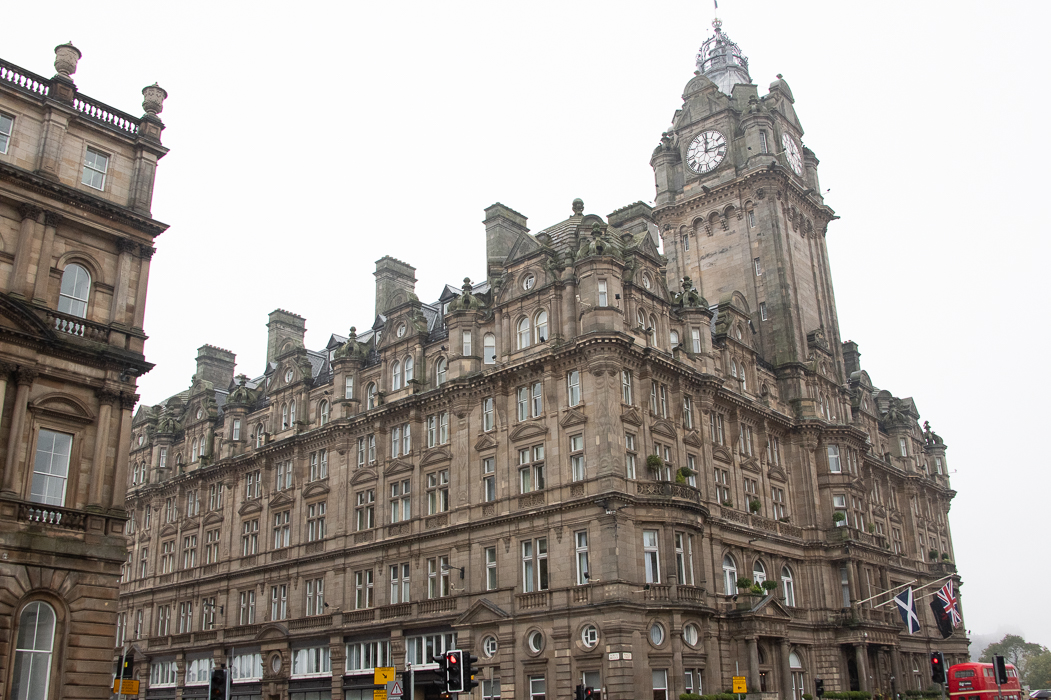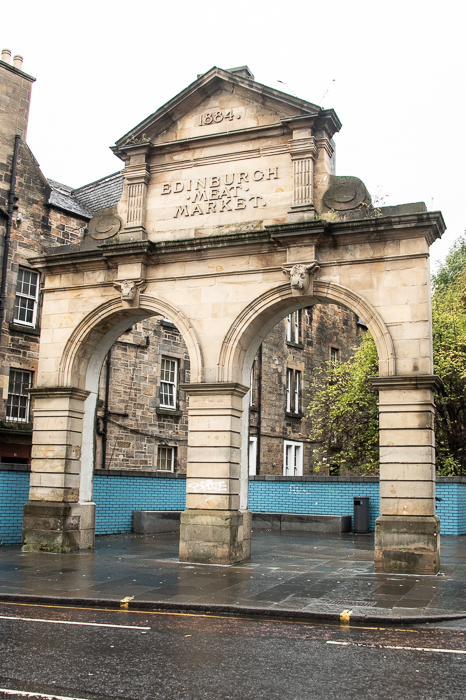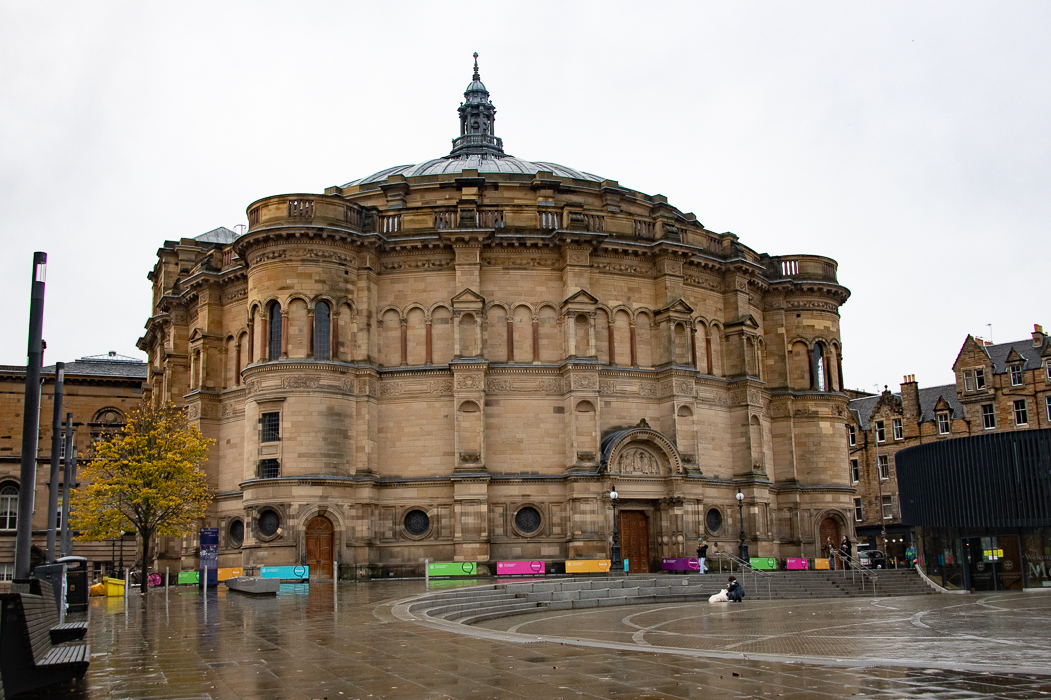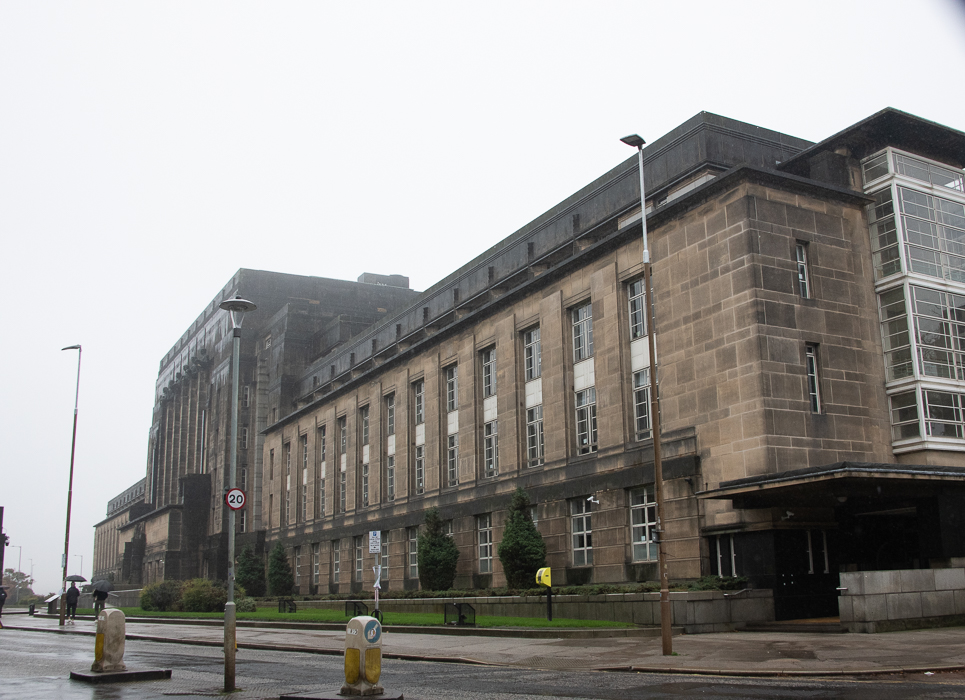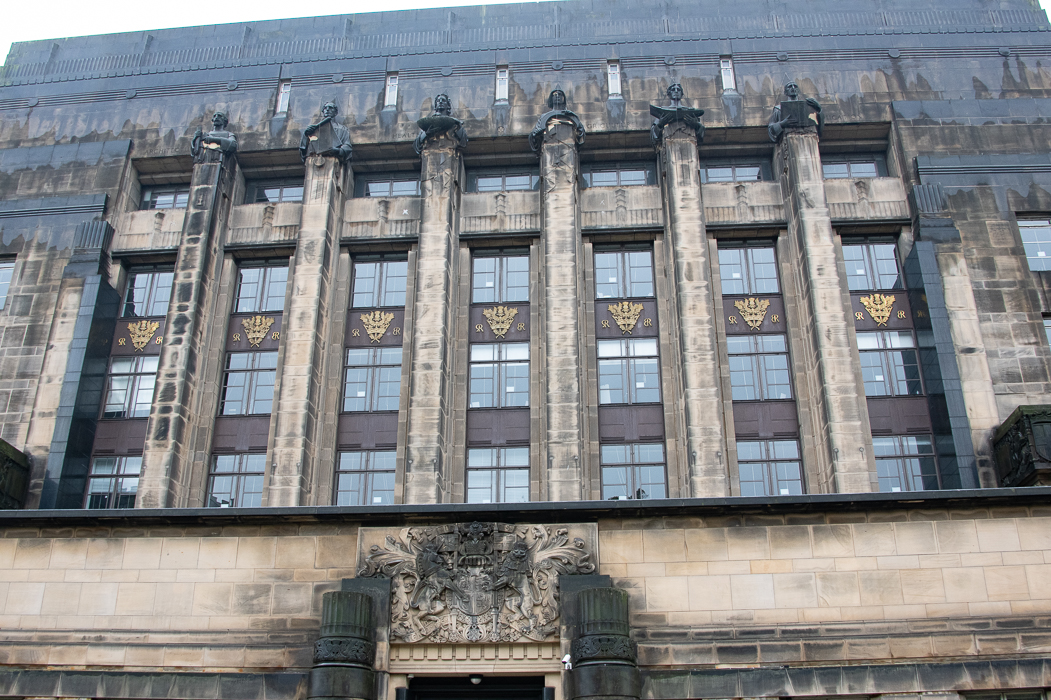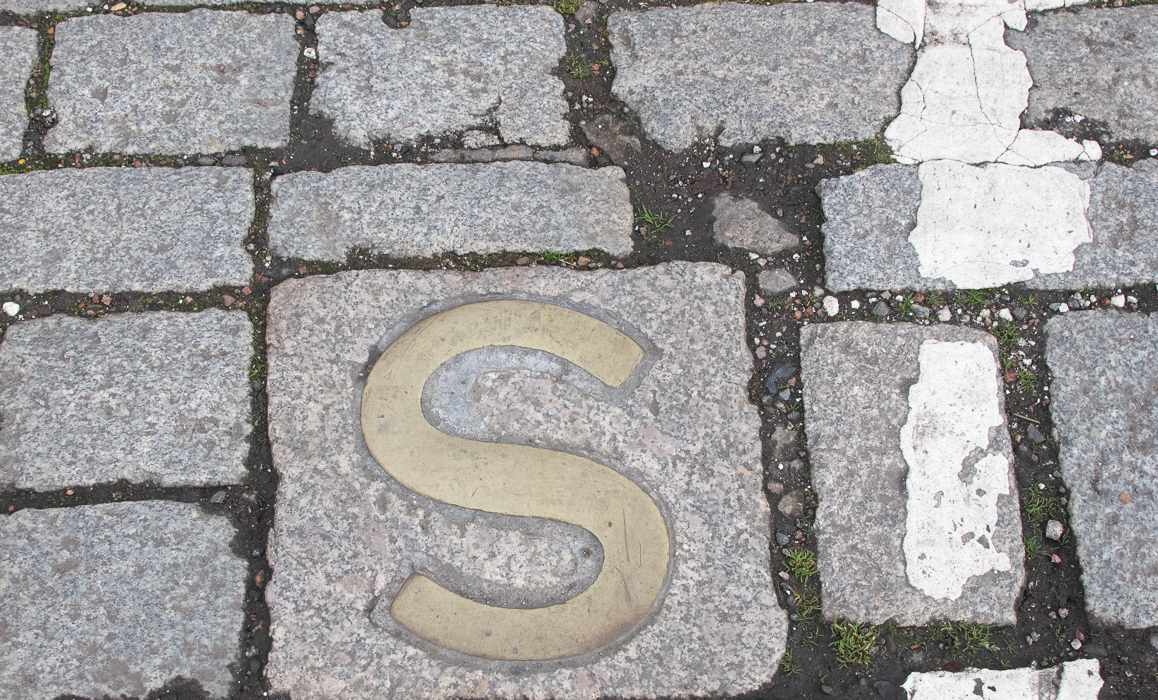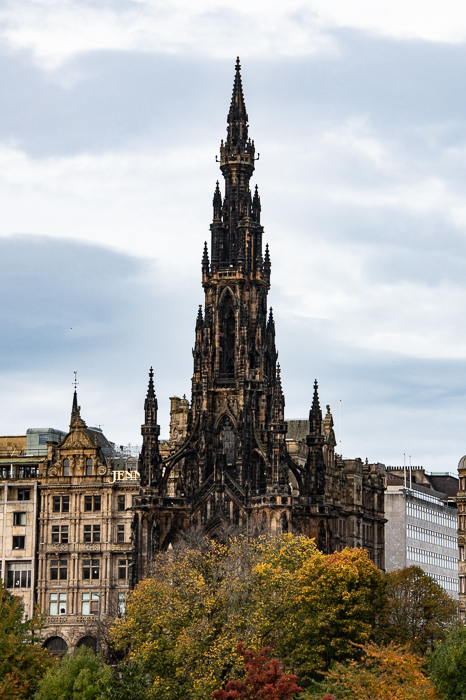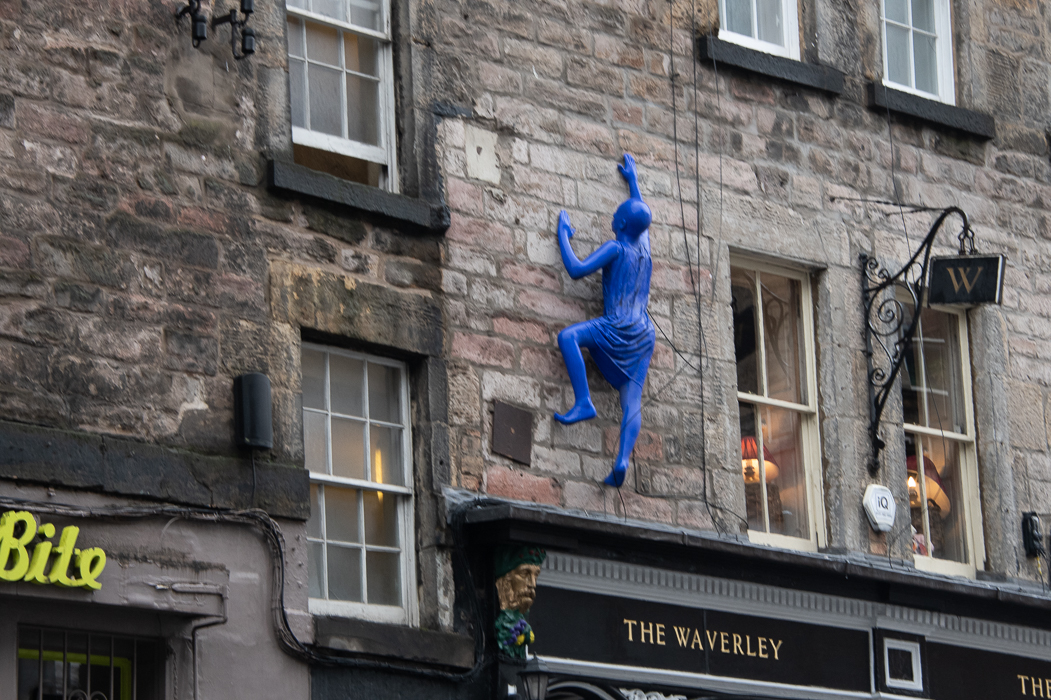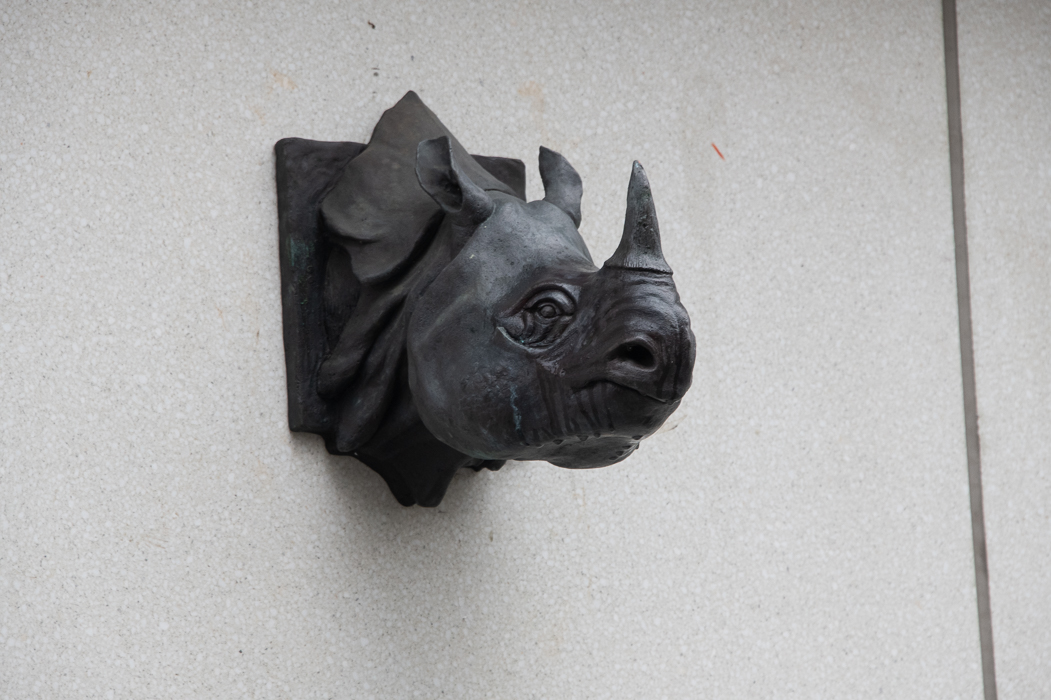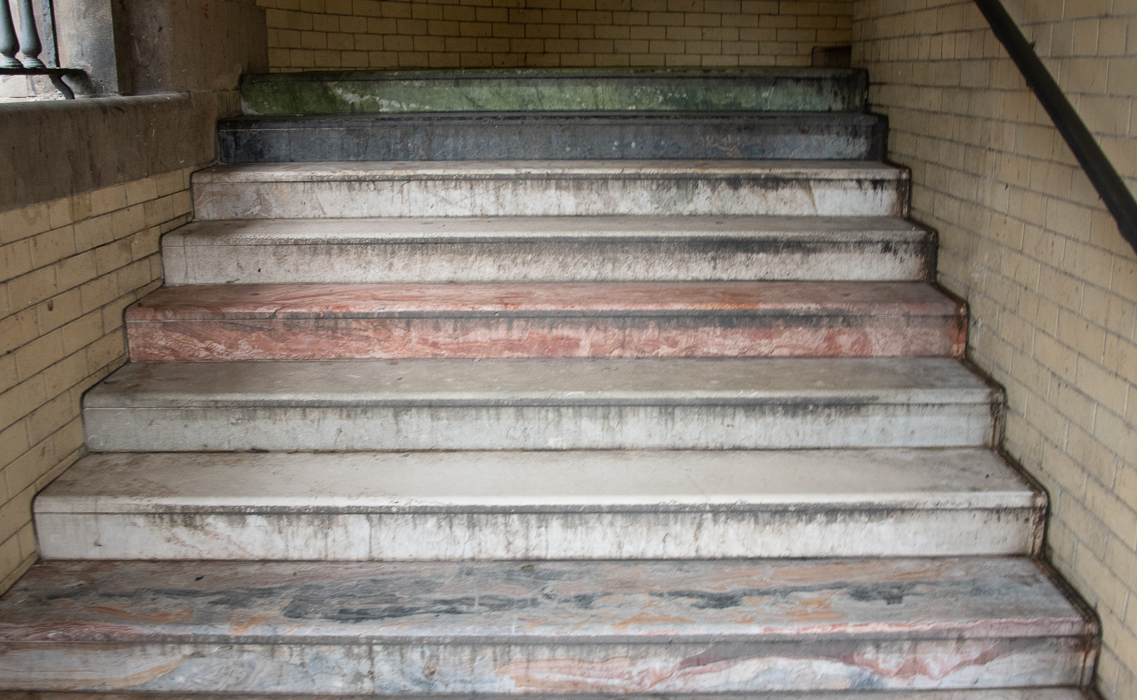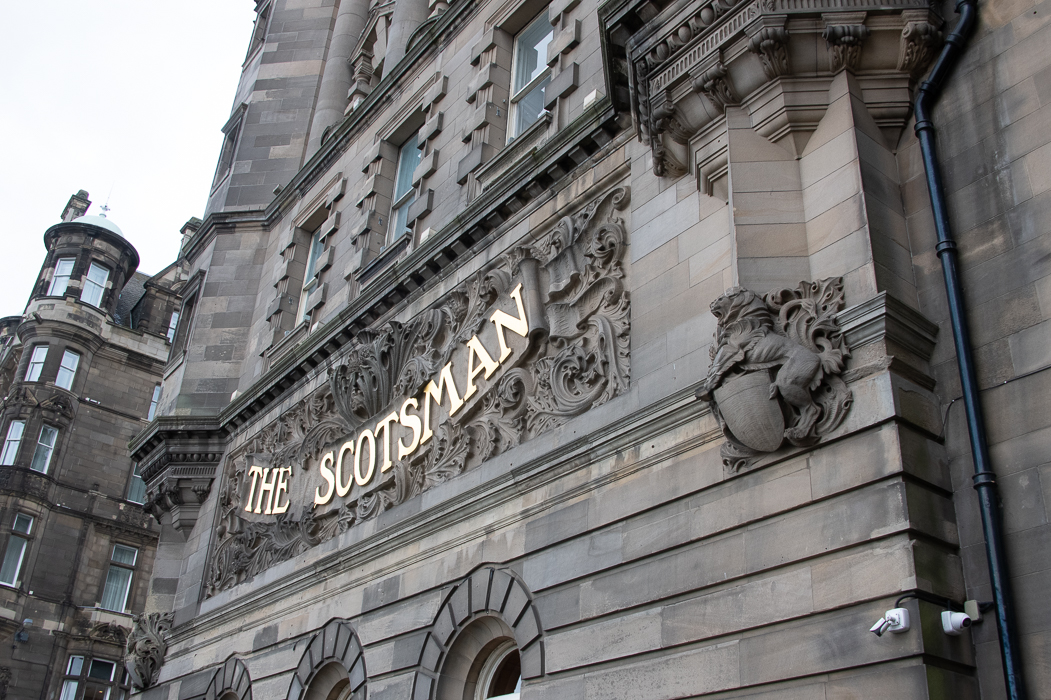October 22, 2022
Today was rainy and foggy making picture-taking problematic. But there is so much to see in Edinburgh I couldn’t let a little weather deter me. Day 2:
Edinburgh is notorious for its unsavory past and has been called the most haunted city in all of Europe. Add to that the dark stone buildings and my love of the macabre was just bouncing with glee.
The Macabre
I have already introduced Greyfriars Kirkyard, here are two more cemeteries I came across.
Tucked away on the grounds of St. Cuthbert’s Parish is this lovely dog sculpture.
Edinburgh and San Diego, California each are home to a famous dog. Edinburgh’s is Greyfriars Bobby that I talked about yesterday and San Diego’s is a vagabond dog named Bum. A statue of Bobby was given to San Diego and this statue of Bum was gifted in return.
The Old Calton Burial Ground opened in 1718, and is the resting place of several notable Scots, including philosopher David Hume. The cemetery is small and yet it is very difficult to determine the locations of various graves. There were two, in particular, I was hoping to find.
Marion Laurie Sutherland who lost her leg and buried it in her grave 23 years before her death. When working on the grounds of the Legion of Honor in San Francisco, many graves were found holding body parts of people waiting the rest of the body to be laid to rest.
The other was Peter Williamson (1730-1799) Peter was stolen and sold into slavery in the US. Freed as an adult he was captured first by the Cherokee and then by the French Army. He returned to Britain and wrote his memories, which caused his hometown of Aberdeen to ban him, due to his insinuation that the authorities were involved in his original kidnapping. He successfully sued them and used his compensation to establish Edinburgh’s first penny post and street directory.
James “Balloon” Tyler”s Rangers Impartial List was a guidebook that helped gentlemen tourists select a particular lady based on a range of criteria, including her age, physical characteristics, and temperament. It also noted if the woman possessed certain skills and attributes, such as; “She regards neither decency or decorum, and would be willing to lie with a chimney-sweep as with a Lord.” This particular publication contained nearly 70 women and listed where to find them.
One place to do so was The Cock and Trumpet Pub located just off Bakehouse Close. This establishment was often frequented by Robert Louis Stevenson.
This remarkable building was originally constructed in 1591, and contains The Tolbooth Tavern. The tavern was used to collect tolls from travelers who wished to enter the city. It also functioned as a council chamber, police court, and prison.
In the middle of the 1600s, Oliver Cromwell’s army detained several Scottish enemies of the state within the structure. Ten years later the cells would be filled with Covenanters who objected to the king being the Head of the Church – if they weren’t sent to Greyfriars.
The building didn’t become a drinking establishment until 1820. The clock structure was added in 1884.
Beyond the Macabre
The Caledonian Hotel opened in December 1903 as part of Princes Street Railway Station. Its creation was a direct response to the North British (The Balmoral) Hotel which had opened on the opposite side of Princes Park, the previous year.
The Caledonian Hotel was built directly above the existing V-shaped railway station building and towered over the main shed. In 1965 nationalization of Britain’s railways forced the closure of Princes Street Station. The giant terminal was demolished allowing for the hotel to be extended over the former concourse.
The Balmoral Hotel clock has been maintained by the Scottish clockmakers James Ritchie & Son since 1902, the hotel’s clock is set three minutes fast to ensure that people catch their trains. The only day it runs on time is December 31st (Hogmanay), for the city’s New Year celebrations.
Edinburgh Meat Market’s distinctive arches were designed by city architect Peter Henderson. they feature two sculpted bull heads which are hard to miss. The slaughterhouse was moved in 1909 as the idea of slaughtering cattle close to residential areas grew rather unpopular.
McEwan Hall is the graduation hall of the University of Edinburgh. It was presented to the University in 1897 by William McEwan, brewer and politician, at a cost of £115,000 and designed by George Mackie Watson.
Saint Andrews House is the center of the Scottish Government. The building was designed by Thomas S. Tait of Burnet, Tait, and Lorne Architects. Construction began in November 1935 and was completed in 1939. The heraldic sculpture on the front is by John Marshall.
Like so many ancient cities there have been several town walls around Edinburgh dating from the 12th century. It is thought that some form of wall probably existed from the foundation of the royal burgh in around 1125. In the 16th century, the more extensive Flodden Wall was erected, following the Scots’ defeat at the Battle of Flodden in 1513.
This is a Sanctuary Stone, which marked the five-mile boundary known as Abbey Sanctuary that gave protection to debtors seeking refuge from their creditors, and like many holy places of its time, it also offered sanctuary to criminals.
However, when the land came under the control of the crown in the late 16th century the right to claim sanctuary was restricted to financial debtors only. In 1880 a law was passed that debtors could no longer be thrown in prison and which rendered sanctuary unnecessary.
The Scott Monument is a Victorian Gothic monument to Scottish author Sir Walter Scott. It is the second largest monument to a writer in the world after the José Martí monument in Havana. There are 68 statues on the monument, not counting Scott and his dog.
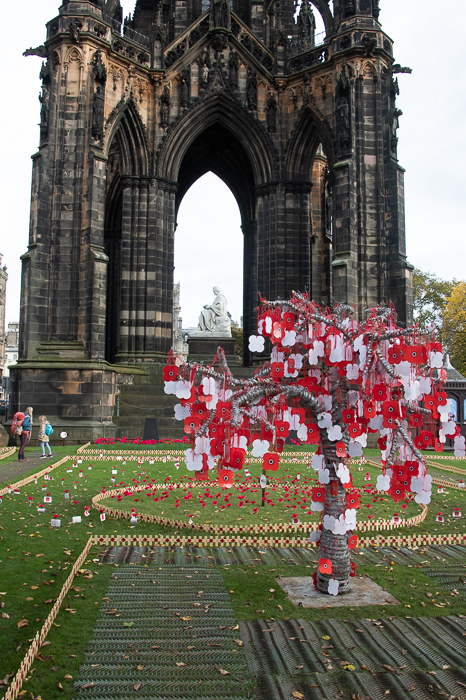
Field of Remembrance in anticipation of Remembrance Day on November 11th at the foot of the Scott Monument
Random Art
The sign near the Rhinocerous reads: This sculpture by William Darrell is in celebration of the cultural richness of Jim Hayne’s Paperback Bookshop (1959-66_ and of the merger between the University of Edinburgh and Edinburgh College of Art (2011) which extends that richness many-fold.
The Scotsman Steps were built between 1899 and 1902 by architects Dunn & Findlay as part of the construction of the building housing The Scotsman newspaper. As part of a planned renovation, the Fruitmarket Gallery commissioned a new public installation by artist Martin Creed to help improve the public perception of the steps. The installation, titled Work No. 1059, clad each of the 104 steps in a different type of marble, with all major marble quarries of the world represented.
This is just a small look at downtown Edinburgh, there is so much to see and do, that I know I must return.
